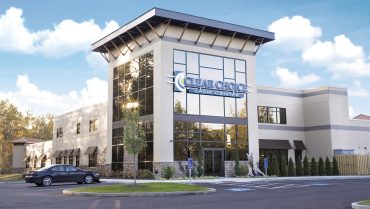The Cleveland Eye Clinic, when it opened in 1945, was a harbinger of things to come. Ophthalmologists worked collaboratively with optometrists from the start, and the clinic’s original owners established this mutually rewarding model. This forward-thinking paradigm continued to flourish under the leadership of cataract and refractive surgery pioneer Robert G. Wiley, MD, who became the owner of the practice in 1990. His son, William F. Wiley, MD, who acquired the practice and became medical director in 2002, remains committed to the clinic’s collaborative care model, but he’s also branched out into ancillary ophthalmic businesses and brands.
Given his lineage, the younger Dr. Wiley has been involved in ophthalmology and refractive surgery his entire life. He underwent radial keratotomy (RK) in the pre-LASIK era; worked with one of the pioneers of refractive surgery, Svyatoslav Fyodorov, MD, during a rotation in medical school in Russia; and grew up attending what has developed into the annual Caribbean Eye Meeting. That meeting began as an informal gathering started by his father and like-minded eye care providers; they decided that their children’s yearly spring breaks were the perfect time to meet in tropical locales to share research and anecdotes about their cases. Today he leads the annual meeting, which has grown into a formal symposium while managing to retain the casual nature upon which it was founded.
Dr. Wiley brought in medical partners Shamik Bafna, MD, and Thomas M. Chester, OD, to help manage the Cleveland Eye Clinic and Clear Choice Custom LASIK Center. Beyond provider partners, they engaged two nonphysician partners: Jeff Kissinger as a managing partner in the LASIK business and Michelle Nelson as partner and head of marketing. Mr. Kissinger is in charge of business development and works hand in hand with Ms. Nelson in marketing.
“My father built a large referral network of optometrists through the Cleveland Eye Clinic, and simultaneously, on a parallel path, he and Jeff started ClearChoice Custom LASIK Center,” Dr. Wiley told CRST. “ClearChoice sparked out of their relationship that started back when RK was the refractive procedure of choice, and Jeff was out in the field selling RK instrumentation. He viewed ophthalmologists more as partners than clients.”
The Cleveland Eye Clinic has seven locations, and ClearChoice has three. The separate entities share a main headquarters (Figure 1) and an ambulatory surgery center (ASC). The Cleveland Eye Clinic focuses on third-party reimbursed and refractive cataract surgery, and ClearChoice Custom LASIK handles cash-pay procedures, including laser refractive surgery, corneal inlays, and CXL. The practices and ASC combined have more than 200 full-time employees.
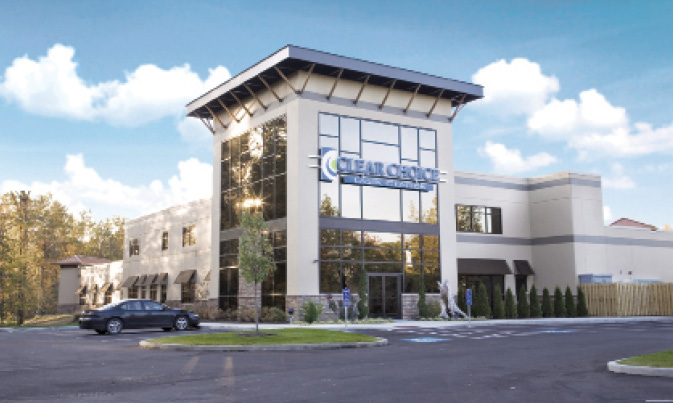
Figure 1. Cleveland Eye Clinic and ClearChoice Custom LASIK Center headquarters.
“Having two separate practices is a unique and effective business model,” Dr. Wiley said. “If you are providing generalized care for cataract patients, as well as LASIK, it can be confusing to patients. That was particularly true in the early days of laser refractive surgery. The centers that specialized in refractive surgery or LASIK alone did better than the ones that tried to do both cataract and refractive, so it makes perfect sense that having two distinct business entities worked well for us.”
GROWING BUSINESS
The past 15 years have been kind to Cleveland Eye Clinic and ClearChoice, Mr. Kissinger said. “When Bill started about 15 years ago, we had one location, and our combined staff for cataract and LASIK was in the range of 10 to 15 employees,” he said. “This year, our LASIK volume is up about 10% and cataracts are up about 20%. We have been really blessed to enjoy some rapid and steady growth.”
Dr. Bafna; M. Amir Moarefi, MD; and Jeffrey M. Augustine, OD (Figure 2), and the other providers at the two centers are integral to this growth, Mr. Kissinger, said, and he sees no sign of its abatement. “We are just at the tip of the iceberg,” he said. “As long as the baby boomers keep coming of age, I think we will continue to grow and need more doctors, more providers, and more places to provide world-class surgery.”
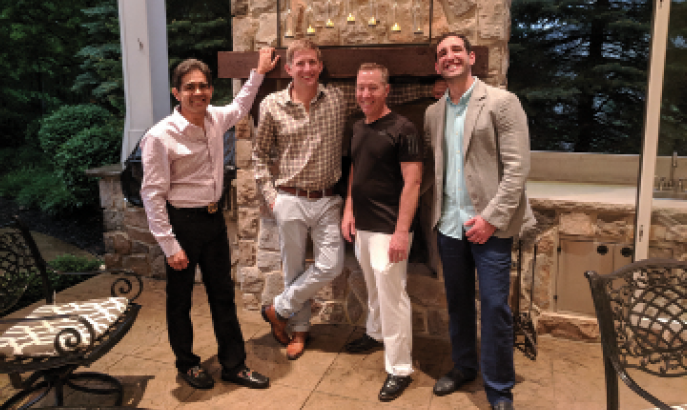
Figure 2. The Cleveland Eye Clinic team includes, from left to right, Shamik Bafna, MD; William F. Wiley, MD; Jeffrey Augustine, OD; and M. Amir Moarefi, MD.
In an interview with CRST, Dr. Wiley and Mr. Kissinger touched on collaborative care, guerilla marketing, the quest for success, and ice cream.
CRST: Cataract surgery has more of a refractive surgical component in recent years. Does this mean there is more interaction between Cleveland Eye Clinic and ClearChoice Custom LASIK Center?
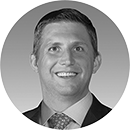
William F. Wiley, MD: They are still separate business entities, but they are more closely aligned than they were originally. Shortly after I joined the practice in 2002, we started seeing the emergence of the premium IOL market. That’s when we started to see the parallel paths of refractive surgery in one business and cataract surgery in another converging. That’s also when we decided it would be a good idea to build a headquarters that housed both of those businesses plus an ASC so we would have all the technology under one roof. We now share patients, staff, and cultures between the two entities. We’re seeing that the cataract culture is now much more reflective of a refractive surgical mindset, and the lessons we learned in the early days of LASIK have helped tremendously in our cataract practice.
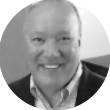
Jeffrey Kissinger: In 1999 when LASIK took off, we created a separate brand for that. We didn’t want LASIK patients sitting in the same lobby as cataract patients. We wanted a separate location, brand, and feel. Now that these LASIK patients have had that upscale boutique experience at ClearChoice Custom LASIK Center, they expect a similar environment when they return for cataract surgery years later. So we’ve been making over our cataract offices to look and feel a little hipper and more like our LASIK centers.
CRST: Comanagement and collaborative care are part of the lifeblood of Cleveland Eye Clinic and ClearChoice Custom LASIK Center. How is your system structured?
William F. Wiley, MD: We have two different ways that we comanage with optometrists. There’s the traditional way, where doctors refer patients directly to us. Then there’s another way, which is that our surgeons see patients in optometrists’ offices. On any given Thursday, I will visit up to nine optometry practices and do preoperative exams and some minor procedures in their facilities. A team of three technicians gets there about a half hour ahead of me to set up an »IOLMaster (Carl Zeiss Meditec), a unit for selective laser trabeculoplasty, and an Nd:YAG laser. This saves the patients a trip to the Cleveland Eye Clinic because they can see a Cleveland Eye Clinic surgeon in their optometrist’s office.
CRST: How did ClearChoice Custom LASIK deal with the economic fluctuations that hurt so many LASIK practices?
Mr. Kissinger: We’ve weathered some difficult times. When we started with LASIK in Cleveland, there were 30 LASIK providers within 50 miles. Today, there are about five. When radio and newspaper advertising stopped working, and the phone stopped ringing, we turned to grassroots guerilla marketing. We bought an RV and wrapped it in the ClearChoice Custom LASIK logo. We would take it to places like the local convention center where an auto, boat, or golf show would attract anywhere from 50,000 to 250,000 people. These were perfect opportunities to engage with people. It would be the first time we would touch them, so to speak, and we would get their basic demographic information so we could add them to our automated digital marketing system. It might take 10 years to go from that first point of contact until they actually walk into the LASIK center, but we know where we first met them and how long it took for them to follow up because we track it. There’s no such thing as an old lead. We may first meet someone in 2006, and then a decade later they finally hit that tipping point and show up in the office. For whatever reason, they never unsubscribed; they just hung in there with us.
William F. Wiley, MD: We also take the RV to the Cleveland Browns’ football games (Figure 3), where we have college interns handing out materials and answering questions. We’ll have a »Pentacam (Oculus Optikgeräte) and automated refractometer there, and we’ll screen people to see if they are candidates for LASIK. We launched the RV marketing campaign right around the time of the LASIK downturn. It was out-of-the-box marketing, and that was crucial because traditional methods weren’t working. That might actually be what got us out of the downturn.

Figure 3. The ClearChoice LASIK RV marketing vehicle outside FirstEnergy Stadium, home of the Cleveland Browns.
CRST: What is another example of your creative marketing methods?
Mr. Kissinger: We have two 1959 reconditioned ice cream trucks (Figure 4) that we use for marketing. We bought them for about $5,000 a piece, and we put about $50,000 into each one to restore them to almost mint condition. The trucks are labeled with the Cleveland Eye Clinic and ClearChoice Custom LASIK Center logos and with their very own Mr. iSee logo.
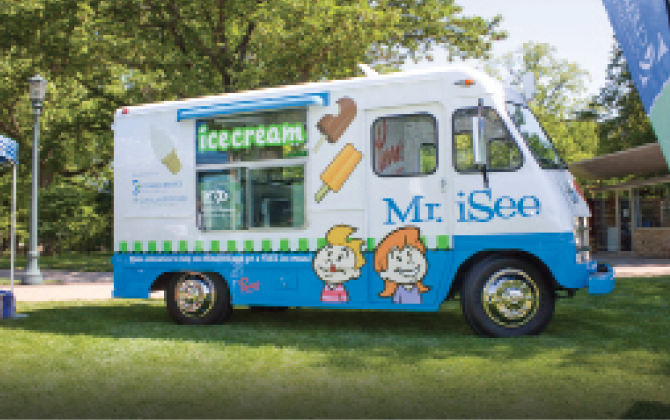
Figure 4. The Mr. iSee ice cream truck provides creative marketing plus charitable fundraising.
We offer the trucks to local charities when they host events to raise money for their causes. We show up and pass out Popsicles, Nutty Buddies, and Push-Up Pops, and all of the proceeds go to support the charities. Also, every Memorial Day weekend Bill takes one of the trucks and drives it around his town, and any donations that are gathered also go to support local charities.
William F. Wiley, MD: When Jeff suggested we buy these trucks, my kids were ages 6 and 4 at the time, and I thought, “I’m going to be the biggest hero to my kids if I come home with an ice cream truck!” In addition to bringing the trucks to fundraising events, we make them available to past patients if they want to reserve one for a graduation party or other event, and again any proceeds that are generated are donated. In addition to being great vehicles for fundraising, they reinforce our brand in the community, and they help people associate our brand with something that generally inspires happy, positive feelings.
CRST: Private equity investors are scouring ophthalmology for large, diversified practices like yours. Is private equity in your future?
Mr. Kissinger: We are keeping an open mind about that. I think Bill is a target for many of these investment companies because he’s young, he runs two high-volume surgery practices, and he has an excellent reputation in the United States and abroad; this practice has an internationally recognized brand. He’s definitely getting phone calls and drawing a lot of private equity attention, but we don’t have anything specific at this time that we are open to.
CRST: What’s the secret that makes Cleveland Eye Clinic and ClearChoice Custom LASIK successful?
William F. Wiley, MD: I think it’s our unwavering commitment to excellence in every facet of practice. We are always working to improve outcomes while also doing everything it takes to create the best possible patient experience. Early on, we were singularly focused on outcomes, thinking that the result is the patient’s priority, but we soon realized that the patient journey through the entire process plays into the overall picture. Our brand, our reputation, our referrals, and our future are about more than excellent outcomes. Our success is made up of many parts, yet it’s more than the sum of those parts.
Mr. Kissinger: One of the many ways that we elevate the patient experience is through our online scheduling system that ties into our front desk operations. We initiated this many years ago before other practices were even considering systems like this. The thing that’s key about this is that it engages interested parties from the beginning of the process, and that’s where the patient experience starts.
CRST: Cleveland Eye Care is known for being first for many things. Can you give a few examples?
Mr. Kissinger: Robert G. Wiley, MD, was one of the first ophthalmic surgeons doing phacoemulsification in this part of the country—which, by the way, left him open to intense criticism from opponents of that disruptive technique. Then he became heavily involved in comanagement with optometrists, which was another initiative that was controversial at the time. He was ahead of his time, and Bill is as well.
Bill has his dad’s desire for wanting to be first. Sometimes that comes with a big price tag because when we go first things don’t always go well, but that’s the price you pay for being a leader. Despite the risks, we try to stay on the cutting edge, to be the first to market with just about everything. Bill was one of the first in the area to offer all-laser LASIK using the »IntraLase femtosecond laser (now Johnson & Johnson Vision). He was one of the first in the country to use the »ORA Intraoperative Wavefront Aberrometer with VerifEye+ Technology (now Alcon), and he was the first in the region to use the »Catalys (Johnson & Johnson Vision) and »Lensar (Lensar) femtosecond lasers for laser refractive cataract surgery. Our desire to be first is the fuel that drives us to innovate.
CRST: Based on your experience, what’s the next big thing in the refractive and cataract surgery markets?
William F. Wiley, MD: I think adjustability or exchangeability of lenses is going to be a huge step forward. Currently in cataract surgery, we are doing a fair number of upgrades, and I think people are enjoying that, but the reality is this: The results are good, but they’re not perfect. The conversion rate to upgraded procedures is tethered to predictability, and we’re not quite there yet. It’s like how RK was good but not great, and then LASIK came along and it was much more predictable and safe. Lenses are going to get much better, and we’re going to be much more confident about achieving the results that patients want. Refractive lens surgery has already taken a major step forward, but it’s going to totally pop, and I think that’s on the horizon.


